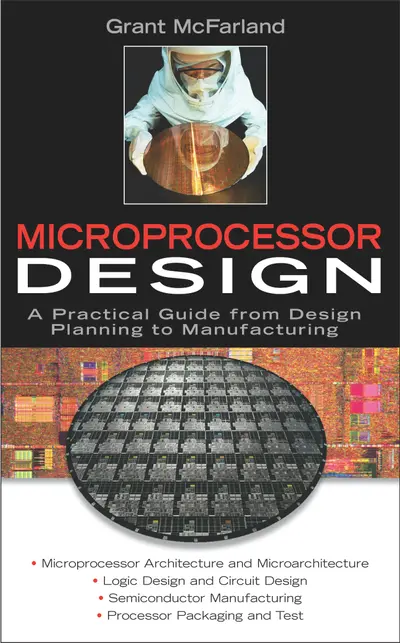My Account Details

ISBN10: 0071459510 | ISBN13: 9780071459518

Step 1 . Download Adobe Digital Editions to your PC or Mac desktop/laptop.
Step 2. Register and authorize your Adobe ID (optional). To access your eBook on multiple devices, first create an Adobe ID at account.adobe.com. Then, open Adobe Digital Editions, go to the Help menu, and select "Authorize Computer" to link your Adobe ID.
Step 3. Open Your eBook. Use Adobe Digital Editions to open the file. If the eBook doesn’t open, contact customer service for assistance.
Publisher's Note: Products purchased from Third Party sellers are not guaranteed by the publisher for quality, authenticity, or access to any online entitlements included with the product.
Gain a Working Knowledge of the Entire Microprocessor Design Flow
This unique step-by-step guide is a complete introduction to modern microprocessor design, explained in simple nontechnical language without complex mathematics. An ideal primer for those working in or studying the semiconductor industry, Microprocessor Design explains all the key concepts, terms, and acronyms needed to understand the steps required to design and manufacture a microprocessor.
Developed from a successful corporate training course, this hands-on learning guide walks readers through every step of microprocessor design. You'll follow a new processor product from initial planning through design to production. In Microprocessor Design, the author converts his real-world design and teaching experience into an easy-to-follow reference employing an on-the-job-training approach to cover:
This authoritative reference is an excellent introduction for students or engineers new to processor design and can show industry veterans how their specialty fits into the overall design flow. This accessible and practical guide will provide the reader with a broad working knowledge of the concepts of microprocessor design, as well as an understanding of the individual steps in the process and the jargon used by the industry.
Chapter 1: The Evolution of the MicroprocessorChapter 2: Computer ComponentsChapter 3: Design PlanningChapter 4: Computer ArchitectureChapter 5: MicroarchitectureChapter 6: Logic DesignChapter 7: Circuit DesignChapter 8: LayoutChapter 9: Semiconductor ManufacturingChapter 10: Microprocessor PackagingChapter 11: Silicon Debug and TestGLOSSARYINDEX
Chapter 3: Design PlanningChapter 4: Computer ArchitectureChapter 5: MicroarchitectureChapter 6: Logic DesignChapter 7: Circuit DesignChapter 8: LayoutChapter 9: Semiconductor ManufacturingChapter 10: Microprocessor PackagingChapter 11: Silicon Debug and TestGLOSSARYINDEX
Chapter 5: MicroarchitectureChapter 6: Logic DesignChapter 7: Circuit DesignChapter 8: LayoutChapter 9: Semiconductor ManufacturingChapter 10: Microprocessor PackagingChapter 11: Silicon Debug and TestGLOSSARYINDEX
Chapter 7: Circuit DesignChapter 8: LayoutChapter 9: Semiconductor ManufacturingChapter 10: Microprocessor PackagingChapter 11: Silicon Debug and TestGLOSSARYINDEX
Chapter 9: Semiconductor ManufacturingChapter 10: Microprocessor PackagingChapter 11: Silicon Debug and TestGLOSSARYINDEX
Chapter 11: Silicon Debug and TestGLOSSARYINDEX
INDEX
Need support? We're here to help - Get real-world support and resources every step of the way.